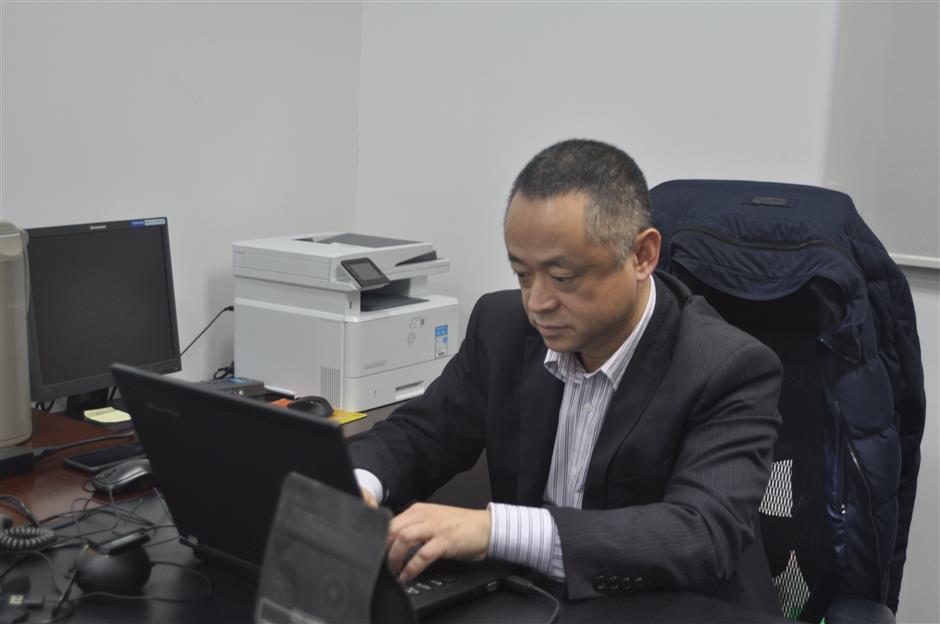
Sun Xiaodongat work in his office at the Shanghai Center for Disease Control and Prevention.
A team of "invisible guards" led by Sun Xiaodong at the Shanghai Center for Disease Control and Prevention is behind the city's statistics and government policies during the coronavirus pandemic.
After a nearly 80-day battle, the virus has been controlled in Shanghai with no local confirmed cases for several weeks. Now Sun, deputy director of the center, and his team are planning for a future vaccination program.
Last month a vaccine developed by a research team led by Chen Wei, a researcher at the Institute of Military Medicine, was greenlit for clinical trials.
"Sun has told us to keep up with the development of vaccine since the novelcoronavirus broke out and guided us to revise a guideline on the selection of a coronavirus vaccine to ensure such a vaccine can enter local market soon after it comes out," said Wu Linlin of the center's immunization planning institute.
Wu said Sun had also asked them to research the health strategy of vaccination and the willingness of people to receive a coronavirus vaccination in advance.
"Questions like how to launch the coronavirus vaccination, which groups of people will receive vaccination and if a collective vaccination will be given, which can allow lots of people to get immunity in a short time but may trigger problems like people gathering, should be all taken into consideration in our plan," said Sun. "Our work looks like a calm sea but with undercurrents beneath its surface. That's why we should always make early plans."
The center was among the first group of authorities to take actions following the news that a pneumonia of unknown cause had occurred in Wuhan, capital of Hubei Province, in December last year. Sun, who was involved in fighting SARS in 2003 and H1N1 flu in 2009, was worried that the disease could spread to Shanghai.
He held a meeting with related departments and worked out a risk assessment report as well as an emergency plan.
At the beginning of the coronavirus pandemic, he and his team set more than 20 detailed solutions to fit the city's situation. As the disease progressed, they updated their prevention and control plan five times and released guidelines on hospital infection control, special group protection, on-site sterilization for different venues and specific measures for residential communities and workplaces.
While local hospitals were tackling existing coronavirus patients, the center was controlling the increase in such patients with methods such as epidemiological investigations.
From Chinese New Year's Eve, the number of suspected cases and close contacts rose quickly in the city. Sun established an epidemiological investigation team of 550 health workers, later expanded to more than 700, to work in shifts day and night to locate sources of infection as soon as possible.
In a few cases, he sent workers to trace all the people involved and carry out screening.
On January 26 and 29, two cases of infection clusters — the occurrence of at least two patients in a relatively small unit — took place in Huangpu and Baoshan districts. The five people involved had never been to coronavirus-hit areas and the source of their infection was uncertain.
During a talk with the health workers, the two Huangpu patients said they once had a meal with friends, one of whom had been confirmed with the disease in Baoshan. Further investigation showed that the three patients in Baoshan had been in Bengbu in Anhui Province in early January and two of them had been to a gym several times, which five of Bengbu's confirmed patients used to visit.
Meanwhile, to trace and manage close contacts, Sun set up a new office at the center for close contact tracking. This office mainly targets people having close contact with confirmed patients on flights, trains, buses or boats.
On February 26, the center received a call for assistance from Zhongwei in the Ningxia HuiAutonomous Region which said it had a patient who had flown from Moscow to Shanghai on February 20 and left the city two days later. It was critical to find out which places the person had been to during his stay in Shanghai but his memory was unclear.
The office sent out its workers to where the person might have been and screened 86 close contacts in two days.
So far, the office has traced nearly 20,000 people and detected more than 120 confirmed patients from the close contacts.
But their work is not always understood by residents. "At first, it's very often for people to reject the investigation or even hang up the phone when our office workers call them. Later with more legal support and assistance from police, the work becomes smoother and sometimes we can visit their homes to collect information," Sun said. "In one case, it took us three hours to persuade a patient to receive concentrated isolation."
Last month, when the pandemic began to improve in China, Shanghai faced a new challenge with an increasing number of inbound coronavirus carriers at local ports.
Sun sent health workers to the city's two airports and cooperated with customs, immigration authorities and airport operators.
Previously, the center had never participated in such cooperation so that Sun and his team had to figure out proper solutions to incorporate their work on prevention and control into on-site working systems. During the peak, 40 health workers were on duty at the airports in turn to help passengers with such things as health declarations and screening for symptoms, and further procedures such as transfers to hospital, quarantine and data collection and report.
The timely reporting and sharing of information and data collected from the forefront ensures quick actions by city's health commission, and the health workers there also coordinated between airports and hospitals or quarantine sites.
Now Sun is busy sharing Shanghai's epidemic prevention and control experience with other countries and promoting health education for overseas Chinese. So far he has communicated with health officials from eight countries including Costa Rica and Hungary.
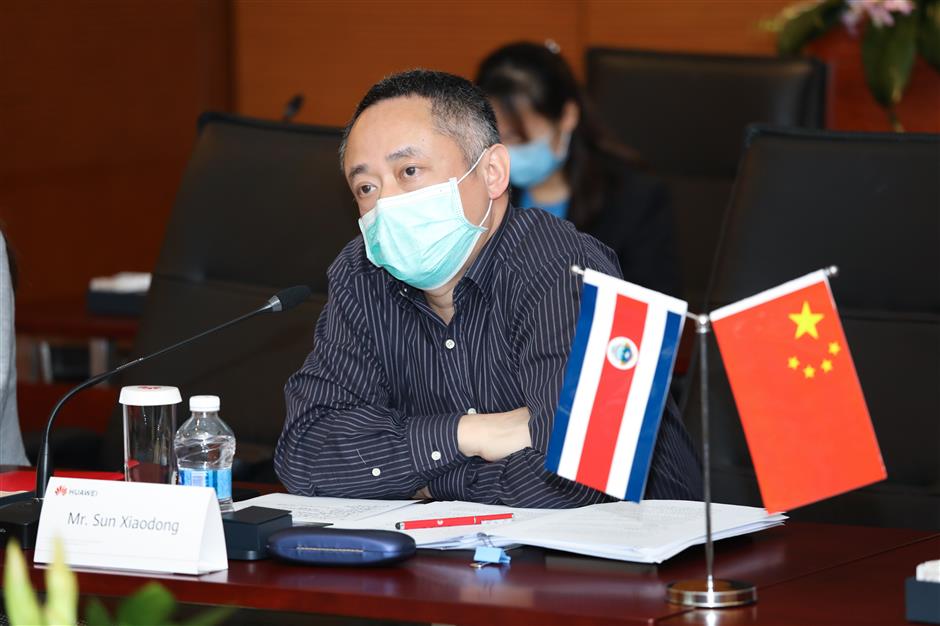 Ti Gong
Ti GongSun Xiaodongattends an online conference with counterparts in other countries to shares Shanghai's experiences in dealing with the coronavirus pandemic.
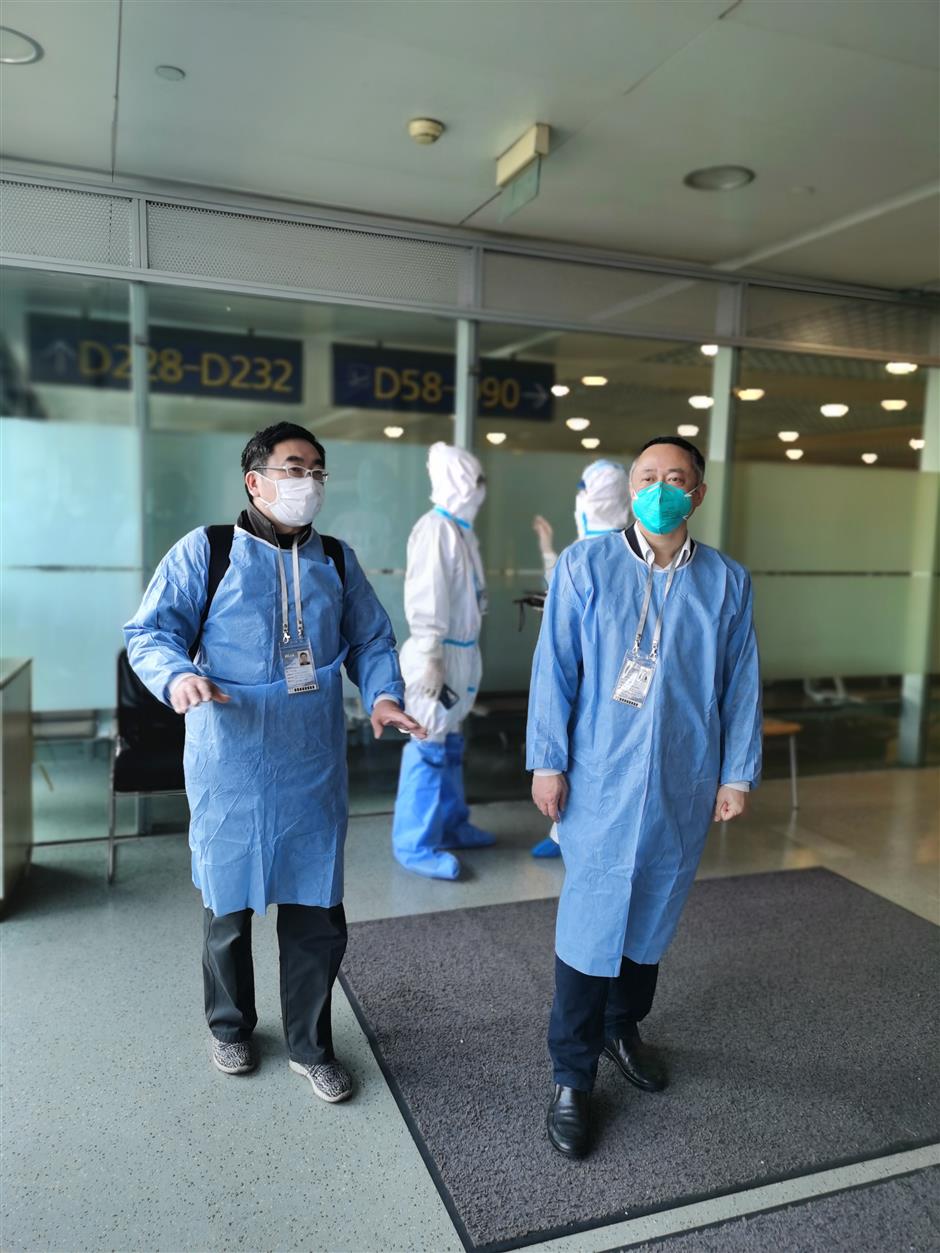 Ti Gong
Ti GongSun Xiaodong(right) with a member of the center's staff who has been working at a city airport.
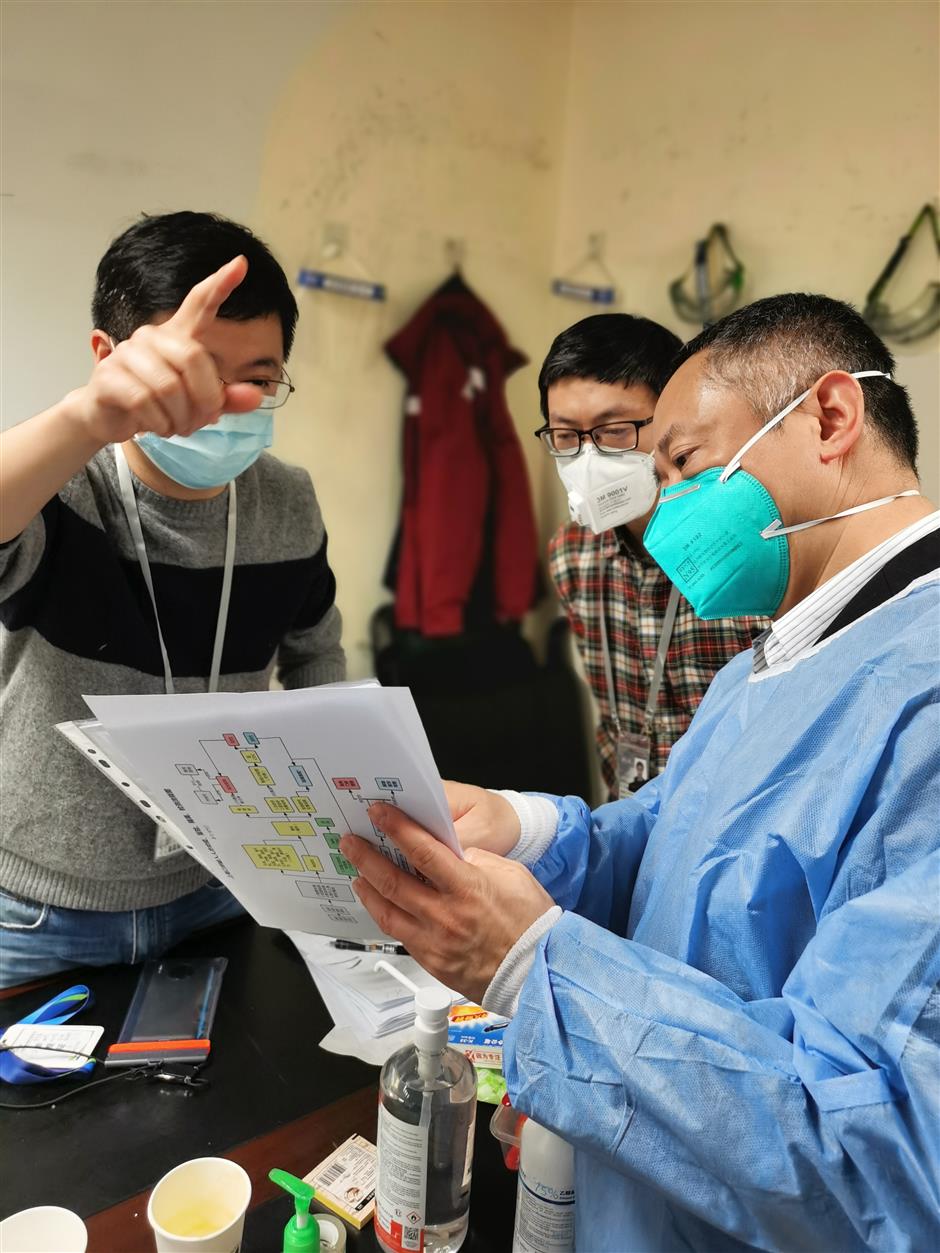 Ti Gong
Ti GongSun Xiaodong(right) gives guidance on epidemic prevention and control to workers at a local airport.
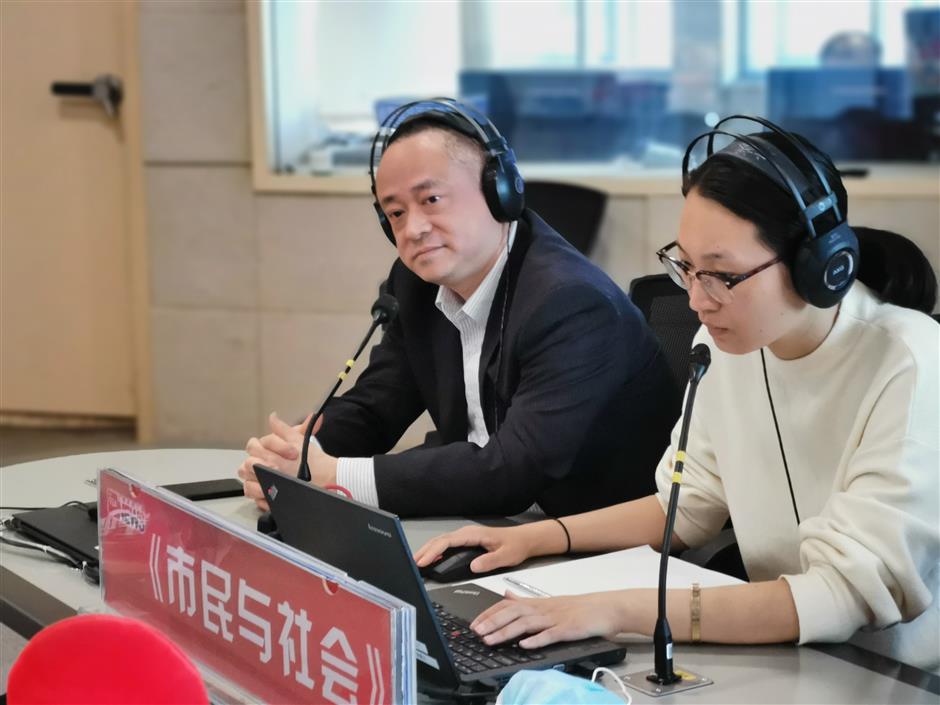 Ti Gong
Ti GongSun Xiaodongtakes part in a health education promotion for local residents in a radio program.
